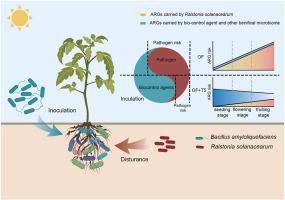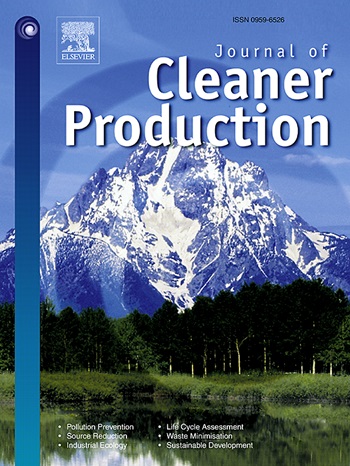Risk assessment of antibiotic resistance genes in rhizosphere soil during tomato growth under bio-control bacterial inoculation
IF 9.7
1区 环境科学与生态学
Q1 ENGINEERING, ENVIRONMENTAL
引用次数: 0
Abstract
The rhizosphere is critical for interactions within the plant microbiome and serves as a key environment for the growth of bacteria that produce or resist antimicrobials. This environment facilitates the strengthening of antibiotic resistance genes (ARGs). Although applying antimicrobial-producing microorganisms helps to reduce the incidence of soil-borne diseases, little is known about their impact on ARG dynamics throughout the plant growth period. Rhizosphere soils from organic fertilizer (OF) and organic fertilizer + Bacillus amyloliquefaciens T-5 (OF + T5) from a long-term field trial were chosen to assess the ARG risk under the input of biocontrol agents during all stages of plant growth. Metagenomic sequencing was used to quantify the dynamics of ARGs, mobile genetic elements (MGEs), and microorganisms harboring these genetic elements. A microcosm pot experiment was then conducted in which tomato plants were cultivated with different concentrations of B. amyloliquefaciens (103, 105, 107, and 109 cells mL−1) to verify the results. The metagenomic data indicated that during the early stage of plant growth, the inoculated biocontrol agent, along with other stimulated beneficial microbes, such as Pseudomonas spp. and Streptomyces spp., which contain ARGs, increased the risk of ARG enrichment in the rhizosphere. However, as plant growth progressed and pathogenic bacteria surged, these beneficial microbes suppressed the increase in the abundance of Ralstonia solanacearum rich in ARGs. This, in turn, mitigated the ARG risks associated with the early-stage enrichment of functional microorganisms. This dynamic between beneficial microbes and plant pathogens in the rhizosphere represents a subtle yet crucial process in mitigating ARG risks. In summary, balancing the limited ARG risk posed by beneficial microorganisms with the prevention of the potentially unlimited ARG risks associated with pathogenic bacteria presents a promising approach within the “One Health” framework.


求助全文
约1分钟内获得全文
求助全文
来源期刊

Journal of Cleaner Production
环境科学-工程:环境
CiteScore
20.40
自引率
9.00%
发文量
4720
审稿时长
111 days
期刊介绍:
The Journal of Cleaner Production is an international, transdisciplinary journal that addresses and discusses theoretical and practical Cleaner Production, Environmental, and Sustainability issues. It aims to help societies become more sustainable by focusing on the concept of 'Cleaner Production', which aims at preventing waste production and increasing efficiencies in energy, water, resources, and human capital use. The journal serves as a platform for corporations, governments, education institutions, regions, and societies to engage in discussions and research related to Cleaner Production, environmental, and sustainability practices.
 求助内容:
求助内容: 应助结果提醒方式:
应助结果提醒方式:


